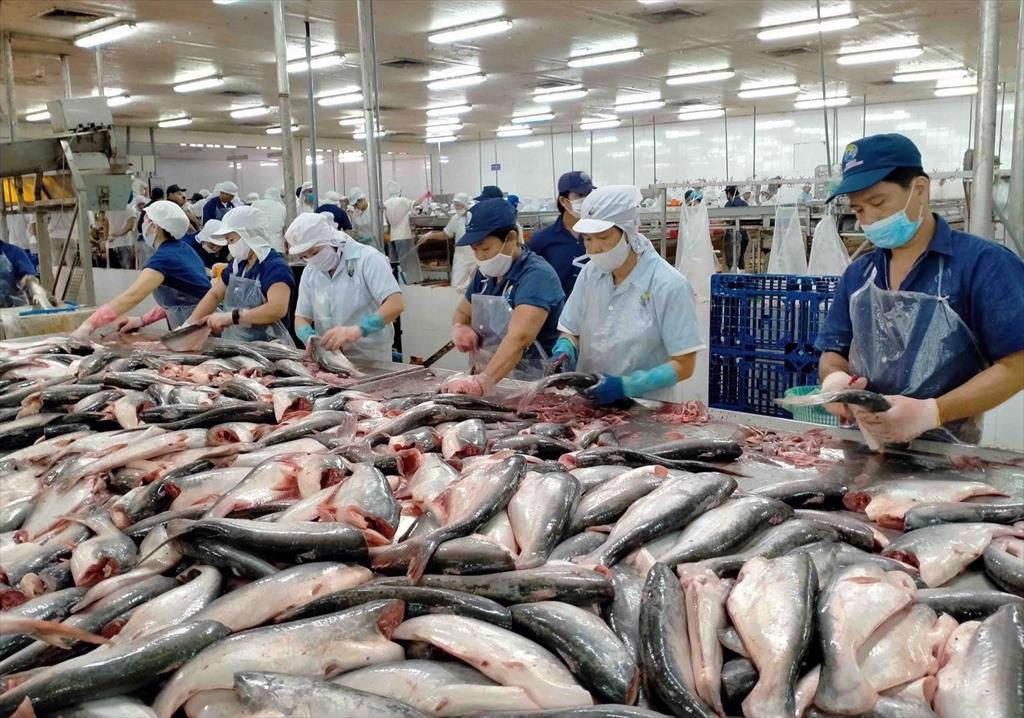(seafood.vasep.com.vn) According to SSI Securities Corporation (SSI), inflation in 2023 continues to be a challenge for Vietnam's seafood industry. In that context, the pangasius industry is expected to prosper when the largest export market, China, has reopened.
Profits of seafood enterprises will decelerate in the fourth quarter of 2022
According to SSI's report, despite many fluctuations between the first and second half of the year, Vietnam's seafood industry had a remarkable year. Vietnam's seafood export turnover in the first 11 months of 2022 reached 10.2 billion USD (up 28% over the same period).
In which, shrimp and pangasius exports reached 4 billion USD (up 14% over the same period) and 2.3 billion USD (up 64%), mainly thanks to the impressive growth of 38% in the first 9 months of 2022. This is a record high result, compared to the CAGR (compound annual growth rate) of seafood exports of 4% during 2011-2021.
In the first half of the year, both shrimp and pangasius exports grew thanks to high demand and rising prices. In the second half of the year, high inflation in major economies affected consumer sentiment, while inventories remained high. As a result, export volumes rapidly decelerated in the second half of 2022.

In the first half of the year, both shrimp and pangasius exports grew thanks to high demand and rising prices.
Listed companies have posted positive business results throughout the first 9 months of 2022, although the quarterly growth rate is slowing down. Most companies benefit from the depreciation of VND against USD with revenue recorded in USD.
Only companies with dollar-denominated debt have recorded unrealized exchange rate losses, but their dollar balances are relatively low. With demand falling, average selling price and unadjusted aqua feed costs (up 33% y/y), SSI experts forecast companies will record a drop in profit in the fourth quarter of 2022.
2023 Outlook
According to the report, in 2023 inflation will continue to be a challenge for the seafood industry in the context of slow turnover of remaining inventories. Even coming events like the Super Bowl and Easter in the US can't reduce inventories that are already running high. The inventory forecast will be fully processed in the third quarter of 2023, with orders beginning to be received at this point.
The average selling price is likely to decrease by 20-30% year-on-year in 2023 and the cost of aqua feed will also decrease. With a slow increase in orders, there will be no shortage of both raw shrimp and pangasius. Thereby, it is forecast that the price of raw materials for shrimp and pangasius will decrease slightly until the end of the first half of 2023.
The fishery's gross margin will decline in 2023. With interest rates expected to remain high for the full year, rising financing costs will continue to weigh on net margins, especially for companies with high leverage, such as IDI Corporation. Overall, SSI experts forecast companies to post negative profit growth in 2023.

The Chinese consumers are very sensitive to any price changes
In the context of consumer reduction in consumption, the report suggests that pangasius sales will be less affected than shrimp sales. The reopening of China is believed to be the “catalyst” for the seafood industry in 2023. Although more time is needed to assess the quantitative impact of China's reopening on pangasius exports, the SSI experts believe that it will benefit the sector's revenue as China is Vietnam's largest pangasius export market.
However, China is a price sensitive market. The average selling price to this market is always about 40% lower than the average selling price to the US market. The report suggested that sales from China would partially offset the decline in pangasius sales from the US and EU markets, but not enough to boost companies to recover profits in the first half of 2023. This is likely due to the high comparative returns in 2022.
Experts remain concerned about the level of uncertainty surrounding China's reopening policies. The profits of pangasius enterprises are expected to decrease in 2023.
Compiled by Thuy Linh